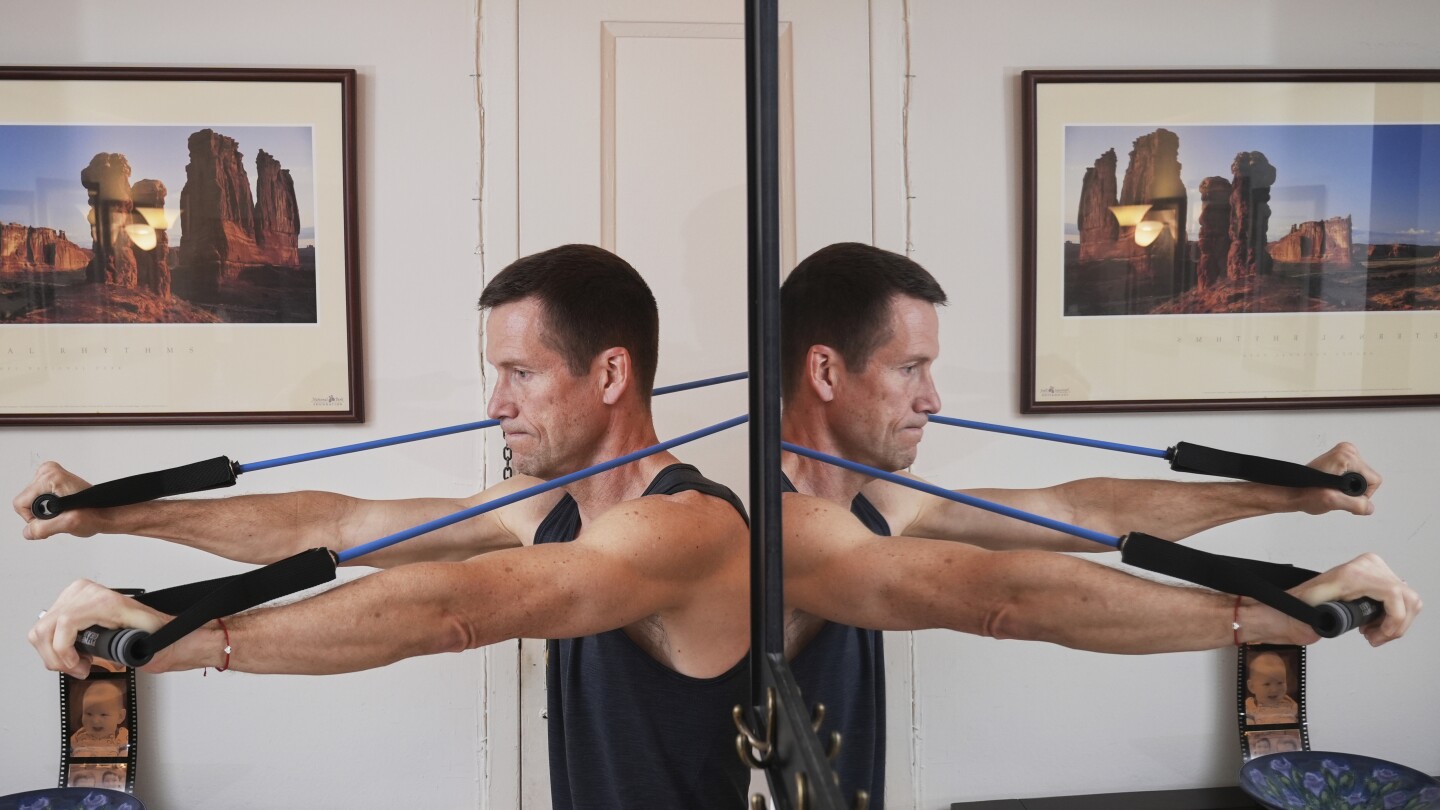Lifestyle
Edmunds: Five great budget performance cars for under $35,000

New car prices continue to rise for the latest high-performance sports cars. Even a new Chevrolet Corvette, long considered a performance bargain compared to the likes of the Porsche 911, has a starting price of almost $70,000. But that doesn’t mean driving enthusiasts on a budget can’t find a car that’s both fulfilling to drive and genuinely capable.
The auto experts at Edmunds have come up with their five favorite performance vehicles for under $35,000. True, you won’t be able to buy anything with a V8. The same applies to electric power — the best-value electric performers cost more. But the vehicles listed here have other distinct advantages. All of the following prices include destination fees.
There’s some irony in the first vehicle in a list of budget-performance cars not being a car at all. But Dodge’s Hornet isn’t your usual small SUV. First off, it has an Italian heritage. Though you wouldn’t know it by its styling, the Hornet shares much of its mechanical design with the Alfa Romeo Tonale small luxury SUV. Second, it’s genuinely powerful for a pint-size SUV. The GT version has a turbocharged four-cylinder engine that cranks out 268 horsepower and is good enough to get you from 0 to 60 mph in about 6.5 seconds. Another bonus: It has standard all-wheel drive for all-season driving and more cargo space than the typical performance car.
2025 Hornet starting price: $31,590
A Ford Mustang GT with its rumbly V8 is well beyond our $35,000 price cap. But the less expensive Ford Mustang EcoBoost is a viable substitute. Having a turbocharged four-cylinder under the hood might seem like heresy, but you can’t argue with the output of 315 horsepower and 350 lb-ft of torque. With its 10-speed automatic spinning the rear wheels, the Mustang EcoBoost can sprint from 0 to 60 mph in a quick 5.6 seconds. The newest Mustang provides a classic American driving experience while being comfortable, stylish and well equipped with the latest technology features.
2025 Mustang coupe starting price: $33,515
You’re as likely to see a Mazda MX-5 Miata roadster in the hands of a cool-headed retiree on lonesome canyon roads as you are spotting one ripping through cones at an autocross. In both cases, the Miata’s appeal comes down to the fun-to-drive fundamentals. A four-cylinder engine directs 181 horsepower to the rear wheels through either a six-speed manual or automatic transmission. That’s not much, but you don’t need much when the car is as light as the Miata. A manual-equipped Miata went from 0 to 60 mph in 6.4 seconds at the Edmunds test track. Beyond the numbers, the Miata is all about playfulness. Quick steering, nimble handling and an easy-to-lower top combine to make any drive worthwhile.
2025 MX-5 Miata starting price: $30,715
The Subaru BRZ and Toyota 86 are mechanically related. Both use a four-cylinder rated at 228 horsepower that sends its power to the rear wheels through a six-speed manual or a six-speed automatic transmission. Edmunds found these cars can sprint to 60 mph in about 6 seconds when equipped with the manual. There’s enough power to be entertaining but not enough to get a new driver in too much trouble, making these fantastic beginner’s sports cars. And there’s a low center of gravity and classic rear-wheel-drive balance to help drivers enjoyably learn about car control. But the Toyabaru twins don’t stop being fun once you master them.
2025 Toyota GR86 starting price: $31,135; 2025 Subaru BRZ starting price: $32,380
The Volkswagen GTI is the quintessential budget performance hatchback. It’s fun and engaging to drive yet practical and comfortable day to day. Few cars can do as many things as well as the GTI. Its turbocharged four-cylinder engine produces 241 horsepower. For 2025, every GTI has a seven-speed automatic transmission and front-wheel drive. Edmunds has found it’s good for a 5.9-second 0-60 mph sprint. Besides performance, the GTI has a spacious cabin and a generous cargo area for its size. The original hot hatch that traces its American lineage all the way back to 1983 is a solid performance value.
Starting manufacturer’s suggested retail price: $33,640
Edmunds says
Spending less than $35,000 can get you a fun vehicle to drive in 2025. Each model here has distinct advantages. You’ll likely prefer the Hornet or Golf GTI if space and practicality are priorities. The Miata, BRZ and GR86 all provide a great feel and connection to the road; picking one of these comes down to whether you want a convertible top or the extra security of a coupe. The Mustang can’t be beat for its classic pony car styling and heritage.
____
This story was provided to The Associated Press by the automotive website Edmunds. Josh Jacquot is a contributor at Edmunds.
Lifestyle
An Alaska Mother’s Day tradition: Mingling with ice age survivors on a farm

PALMER, Alaska (AP) — It is one of Alaska’s favorite Mother’s Day traditions, getting up close and personal with animals that have survived the ice age.
All moms get a daisy and free admission Sunday at the Musk Ox Farm in Palmer, about an hour’s drive north of Anchorage. Once inside they will have the chance to view 75 members of the musk ox herd, including three young calves just getting their feet under them. Also a draw is an old bull named Trebek, named after the late “Jeopardy!” host Alex Trebek, a benefactor of the facility.
“Who doesn’t want to celebrate Mother’s Day with a musk ox mom and the most adorable calf you’re ever going to find in your life?” said Mark Austin, the farm’s executive director.
Mother’s Day is the traditional start of the summer season for the farm, which traces its roots back to 1964 and at several locations before moving in 1986 to Palmer.
That move put it on Alaska’s limited road system, provided easier access to grazing land than in tundra communities and it to incorporate educational opportunities at the farm facility, which is dwarfed by the the Talkeetna and Chugach mountain ranges.
“When we opened the doors here, we started doing Mother’s Day as a grand opening every year,” Austin said.
He called it a natural decision, celebrating mothers with cute, newborn baby musk oxen on the grounds. So far this year, three baby musk oxen have been born and are on display, and more could be on the way.
Mother’s Day is the busiest day of the year, attracting more than 1,500 visitors. It is a tradition that now stretches over three generations.
“It’s a huge, just kind of rite of passage for a lot of people,” Austin said. “If we ever talked about not doing it, there’d be a riot.”
Musk oxen are ice age survivors.
“They were running around with saber-toothed tigers and mastodons, and they’re the ones that lived,” Austin said. The herd members all have diverse personalities, he added, and they are crafty, smart and inquisitive.
Their closest relatives to animals of today would be Arctic goats. Mature musk ox bulls can stand 5 feet (about 1.5 meters) tall and weigh as much as 800 pounds (about 360 kilograms), while female cows are smaller at about 4 feet (about 1.2 meters) and up to 500 pounds (about 230 kilograms), according to the Alaska Department of Fish and Game’s website.
They are stocky, long-haired animals with a slight hump in their shoulder, a short tail and horns, the website says. The Inupiat call musk ox “itomingmak,” which means “the animal with skin like a beard,” for its long hair hanging nearly to the ground.
The mammals once roamed across northern Europe, Asia, Greenland and North America before they began to die off. By the 1920s the last remaining ones were in Greenland and Canada.
Efforts to reintroduce the musk ox to Alaska started in 1934, when 34 were delivered to Fairbanks from Greenland. Since then, the wild population has grown to about 5,000, located throughout the nation’s largest state, Austin said.
The nonprofit farm welcomes donations from visitors on Sunday. Some people will make a beeline for the baby musk oxen, while others will throw a $100 bill on the counter first.
“We do like to see the donation, but we truly offer this as an event to the community, as a thank you,” Austin said. “It really gives us a chance to give something back.”
Lifestyle
Economic jitters and soaring gold prices create a frenzy for US jewelry merchants

LOS ANGELES (AP) — At the biggest jewelry center in the United States, Alberto Hernandez fired up his machine on a recent day and waited until it glowed bright orange inside before shoveling in an assortment of rings, earrings and necklaces weighing about as much as a bar of soap: just under 100 grams, or 3.2 troy ounces.
Minutes later, the bubbling liquid metal was cooling in a rectangular cast the size of a woman’s shoe. An X-ray machine determined it was 56.5% gold, making it worth $177,000 based on the price of gold that day.
As gold prices soar to record highs during global economic jitters, hundreds of thousands of dollars’ worth of gold are circulating through the doors of St. Vincent Jewelry Center in downtown Los Angeles on any given day.
Many of the center’s 500 independent tenants, which include jewelers, gold refiners and assayers, say they have never seen such a surge in customers.
“Right now, we’re seeing a lot of rappers and stuff melting their big pieces,” said Alberto’s nephew, Sabashden Hernandez, who works at A&M Precious Metals. “We’re getting a lot of new customers who are just getting all of their grandfather’s stuff, melting it down pretty much.”
Gold’s current rally comes as President Donald Trump issues ever-changing announcements on tariffs, roiling financial markets and threatening to reignite inflation.
In response, people across the country are flocking to sell or melt down their old jewelry for quick cash, including middlemen like pawn shop owners. Others, thinking their money might be safer in gold than in the volatile stock market, are snapping it up just as fast.
Los Angeles jeweler Olivia Kazanjian said people are even bringing in family heirlooms.
“They’re melting things with their family’s wedding dates and things from the 1800s,” Kazanjian said.
She recently paid a client for a 14-karat gold woven bracelet with intricate blue enamel work that could be turned into a brooch. The customer walked away with $3,200 for the amount of gold contained in the piece measured in troy ounces, the standard for precious metals equivalent to 31 grams.
But Kazanjian doesn’t plan to melt the piece. The real artistic and historical value was a lot more, she said.
“It’s just stunning … and you won’t see that kind of craftsmanship again,” Kazanjian said, adding she has persuaded some customers to change their minds about melting items. “It’s a piece of history, and if you’re lucky enough to inherit it, it’s a piece of your family.”
Businesses on the sales side of the action, offering gold bars and other material, also are working hard to keep up with the frenzy.
“Stuff comes in and it goes right out,” said Edwin Feijoo, who owns Stefko Cash for Gold in Pennsylvania and receives shipments from customers across the U.S. looking to sell their gold. “Everybody’s busy right now.”
Business hasn’t been good for everyone, though.
For some jewelers who source their products from places abroad like Italy, Turkey and China, the combination of high gold prices and added tariffs have cut into profit margins and hurt demand.
“Our profit margins are so razor thin here,” said Puzant Berberian, whose family founded V&P Jewelry inside St. Vincent in 1983. Berberian said he recently paid an extra $16,000 on a package from overseas.
Customers also are feeling “sticker shock” when they can’t afford the things they used to. A chunky, 14-karat gold bracelet weighing about 10 grams (0.32 troy ounces) might have sold for around $600 last year, but now it’s closer to $900, Berberian said.
Some believe those trends could continue, both for consumers and businesses.
Customers hoping to buy bullion “think gold will go up” even more, according to Sam Nguyen, whose business, Newport Gold Post Inc., has bought and sold gold and other precious metals at St. Vincent for five years. While gold has cooled from its record high of $3,500 per troy ounce, Nguyen thinks it could reach $4,000 to $5,000 by year’s end.
Jeff Clark agrees. The founder of The Gold Advisor, which provides investment advice, said he wouldn’t be surprised if gold prices continue rising since the metal is considered a haven for people to park their money when there is anxiety about a possible recession.
“History shows it has gone much higher in the past,” Clark said, referring to a frenzy in the 1970s when the average price of gold increased 17-fold amid double-digit inflation rates. “If the fear and uncertainty continues in the general populace, the prices are going to keep going up.”
Lifestyle
Too busy to get fit? Here’s how to work exercise into your packed schedule

You’re too busy to exercise, right? Your job consumes all your time. You’re strapped by professional and family demands. As you get more and more responsibility, your free time shrinks.
Well, these blockers don’t have to be an excuse. Making time simply calls for creativity and a broader understanding of how to get in daily exercise.
“The trap is thinking that exercise must be an hour in the gym,” said Charles Scott, who describes himself as an executive mentor or exercise coach.
His message is simple: If you have a very demanding job, you need to find a work-life blend.
“An hour in the gym is exercise,” Scott told The Associated Press. “But it’s just one form of exercise.”
Scott coaches about 70 business executives — online and otherwise — and other busy people to improve their physical and professional well-being. He’s based in New York and is relatively hardcore about his own exercise but realizes not everyone can be — or wants to be.
He’s planning to run across the Grand Canyon in June — the out-and-back version — that covers about 46 miles (74 kilometers). He also has guided his blind friend Dan Berlin on several endurance events including a speed ascent up Mount Kilimanjaro and tandem cycling across the United States with a team of blind cyclists.
The ambitious person’s trap
Rather than terming it exercise, Scott talks about teaching “intentional movement” to his goal-driven clients.
“The ambitious person’s trap is when you undermine your physical and emotional health in pursuit of your professional goals,” he said. “It’s common in this culture among the executives I mentor.”
Scott asks busy people to focus on something other than making money or chasing fame inside the profession. He said he tries to emphasize a holistic approach that includes the emotional, the professional and the physical.
“Our bodies need to move,” he said. “No matter what age you are, our bodies must move to stay healthy. So if you’re not exercising, you’re out of alignment.”
Alternative exercise for busy people
Scott has a list of ways to blend movement into your day without needing a gym. Of course, if you can hit the gym, that’s great, too.
He suggests doing one-on-one meetings while you’re walking instead of sitting behind the office desk or laptop. Or, he suggests standing rather than sitting when you hold meetings.
“If you want a meeting to be short and efficient, choose the standing conference room,” he said.
Or do isometric exercises during a meeting to tone, for instance, your stomach muscles.
“Tighten up your stomach muscles. Hold for 20 seconds and don’t hold your breath,” he said. “Don’t make it obvious. Release. Do it again. You’ll be sore tomorrow. It burns calories. It tones muscles. And it takes precisely zero seconds out of your I-am-too-busy-to-exercise day.”
Ways to blend work and exercise
Here are a few more ideas about blending exercise into your work schedule.
If your flight is delayed, go for a walk around the airport and add to your daily step count.
Link workouts to daily events. For example, when you wake up, always go for a walk. Or, when you get home from work, do a certain number of pushups after you walk through the door.
Make a workout a social event and do it with a friend or a group.
Give yourself the title “athlete” and build habits around that identity. Scott is an advocate of experiencing “meaningful discomfort,” which he calls the “birthplace of resilience.”
Pay attention to the food you put in your body. Treat your body with respect.
Take a quick break from answering emails and do 10 squats or pushups or whatever to add movement.
“In business, many people show up to work and they crank it out all day,” which he termed a “rookie mistake,” like a newcomer going out too fast at the start of a marathon.
“Then they go home exhausted and they are fussy with the people they love.”
The partitioning approach
One of Scott’s clients is Harrison (Harry) Kahn, the general manager of the Vermont Creamery, an artisanal dairy.
Rather than blend, Kahn uses the partition method and awakens at 5 a.m. to get in his exercise, typically running, biking, or popping on skis in the winter in largely rural Vermont.
“I kind of get in the me stuff before the rest of the house wakes up,” he said.
He said his wife, Elisabeth, teaches French. She sets off early as they both combine to get their two children ready for school — 11-year-old Iris and 8-year-old Asher.
“Charles has reminded me that life isn’t a game of comparison with other people,” he said. “You have to figure out your own stuff.”
Kahn describes himself as a routine-oriented person who is comfortable dividing his day into chapters. Once he’s in the office, his attention is the job and 120 employees.
“I’m very focused when I’m at work, so I can get it all in as opposed to going in and out and having the day go on really long.”
-

 Middle East2 days ago
Middle East2 days agoSyria’s Druze divided as sectarian tensions linger after violence | Syria’s War News
-

 Middle East2 days ago
Middle East2 days agoWorld could be witnessing ‘another Nakba’ in Palestine, UN committee warns | Israel-Palestine conflict News
-

 Africa2 days ago
Africa2 days agoRussia stages massive victory day parade, Putin hails troops in Ukraine as foreign leaders attend
-

 Conflict Zones2 days ago
Conflict Zones2 days agoWho are the armed groups India accuses Pakistan of backing? | Armed Groups News
-

 Asia1 day ago
Asia1 day agoThe US takes credit for India-Pakistan ceasefire, but it was pushing on an open door
-

 Middle East1 day ago
Middle East1 day agoIraq look to former Australia coach Arnold to boost 2026 World Cup hopes | Football News
-

 Europe1 day ago
Europe1 day agoEuropean leaders arrive in Kyiv in show of support for Ukraine
-

 Conflict Zones1 day ago
Conflict Zones1 day agoCould India, Pakistan use nuclear weapons? Here’s what their doctrines say | India-Pakistan Tensions News




